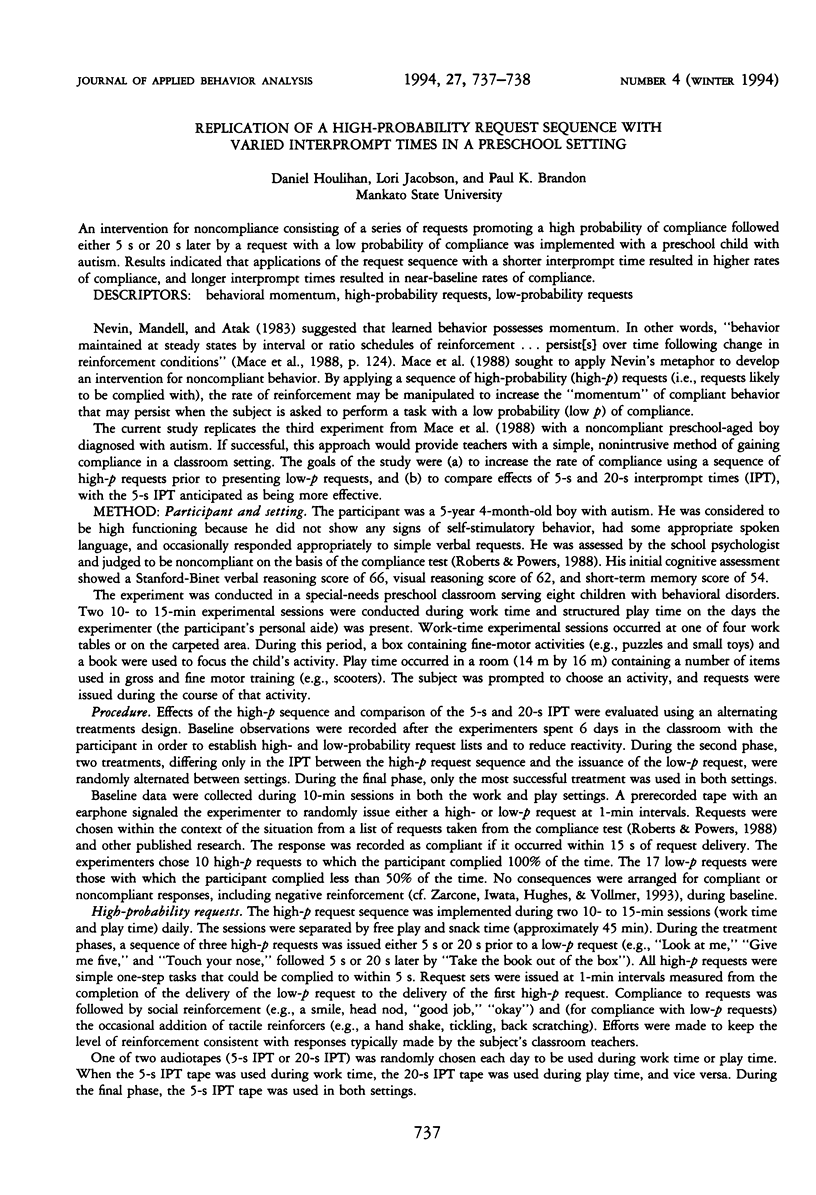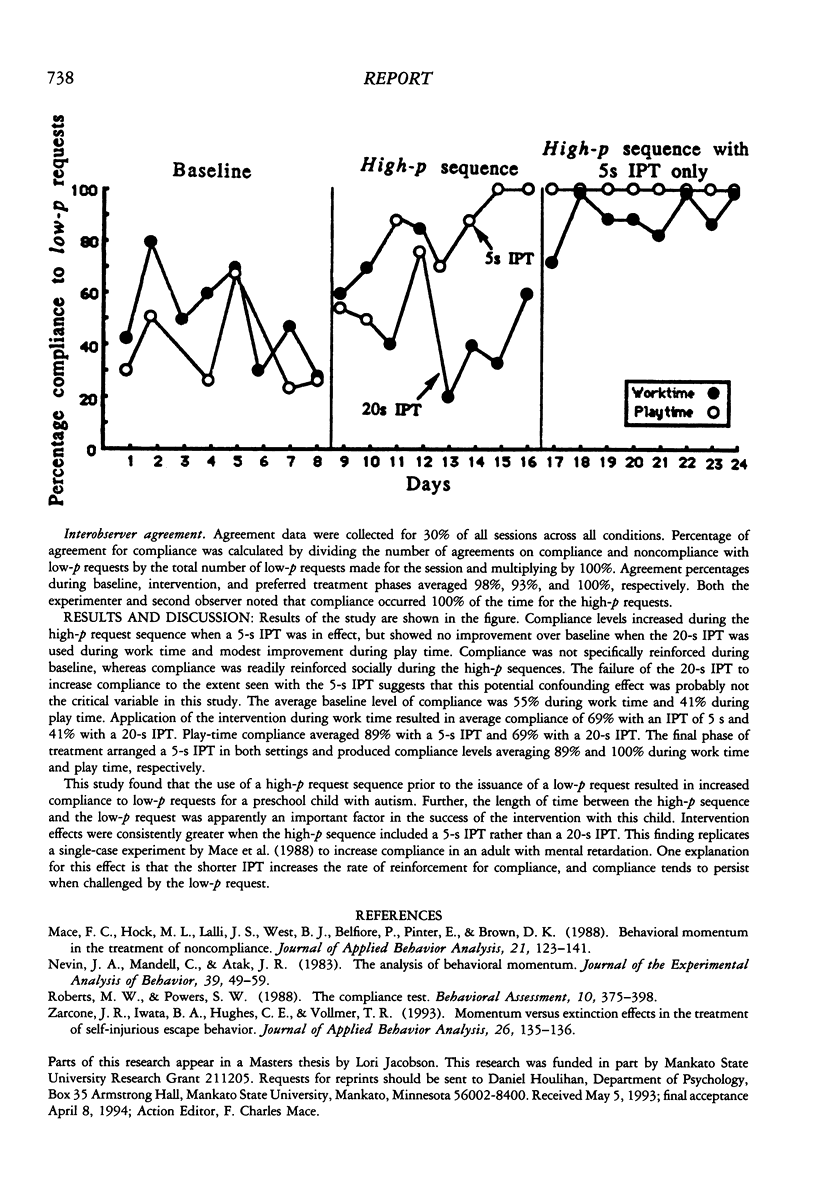Abstract
An intervention for noncompliance consisting of a series of requests promoting a high probability of compliance followed either 5 s or 20 s later by a request with a low probability of compliance was implemented with a preschool child with autism. Results indicated that applications of the request sequence with a shorter interprompt time resulted in higher rates of compliance, and longer interprompt times resulted in near-baseline rates of compliance.
Keywords: behavioral momentum, high-probability requests, low-probability requests
Full text
PDF

Selected References
These references are in PubMed. This may not be the complete list of references from this article.
- Nevin J. A., Mandell C., Atak J. R. The analysis of behavioral momentum. J Exp Anal Behav. 1983 Jan;39(1):49–59. doi: 10.1901/jeab.1983.39-49. [DOI] [PMC free article] [PubMed] [Google Scholar]
- Zarcone J. R., Iwata B. A., Hughes C. E., Vollmer T. R. Momentum versus extinction effects in the treatment of self-injurious escape behavior. J Appl Behav Anal. 1993 Spring;26(1):135–136. doi: 10.1901/jaba.1993.26-135. [DOI] [PMC free article] [PubMed] [Google Scholar]


